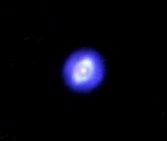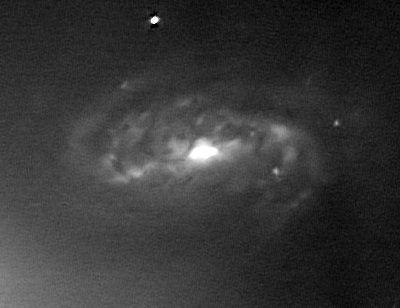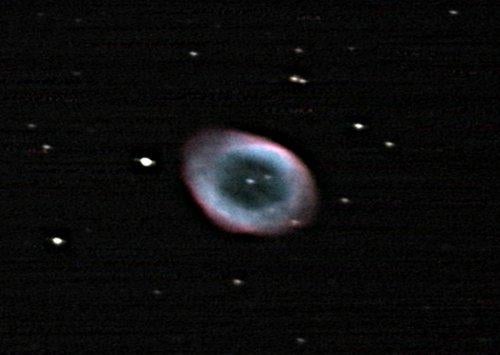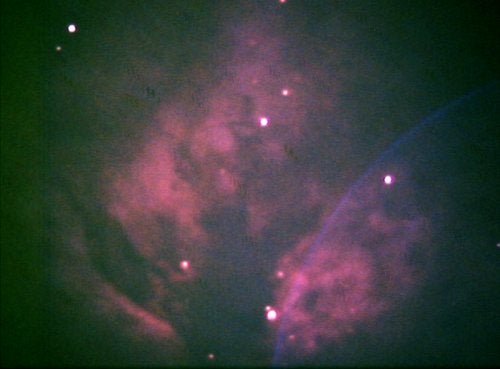To image these more challenging objects, modifications had to be made to the webcams, as discussed in “Imaging with webcams” in the December 2003 issue of Astronomy. If you’d like to learn more, the article’s author, Keith Wiley, maintains an excellent website about webcam astrophotography.
In the meantime, check out this gallery of webcam images.
NGC 3242 (The Ghost of Jupiter)
Keith Wiley captured this image of NGC 3242 in Hydra with a modified Logitech QuickCam Pro 3000 mounted on a Meade 8-inch LX200 Schmidt-Cassegrain telescope at f/6.3. Forty-five 20-second exposures were stacked to create the composite. The software used to capture and process the images was Keith’s AstroImager and Keith’s Image Stacker.
Ashley Roeckelein captured this image of the spiral galaxy NGC 2903 with a modified Philips ToUcam Pro on a 10-inch Meade LX200 Schmidt-Cassegrain telescope at f/10 with a 0.33 focal reducer and a Sirius Optics MV-1 filter. Thirty 30-second exposures were stacked to create it. The capturing and processing software included K3CCDTools, Iris, and AiGfxLab.
Alan Leggett made this picture of the Ring Nebula (M57) with a modified Philips Vesta 680, Peltier cooled, on a 10-inch Meade Schmidt-Cassegrain telescope. Twenty 20-second exposures were stacked to produce this image. The capturing and processing of this image were accomplished using K3CCDTools software.
Keith Wiley created this view of the Flame Nebula with a modified Logitech QuickCam Pro 3000 mounted on a Meade 8-inch LX200 Schmidt-Cassegrain telescope at f/6.3. The processing was done with Keith’s AstroImager and Keith’s Image Stacker.













